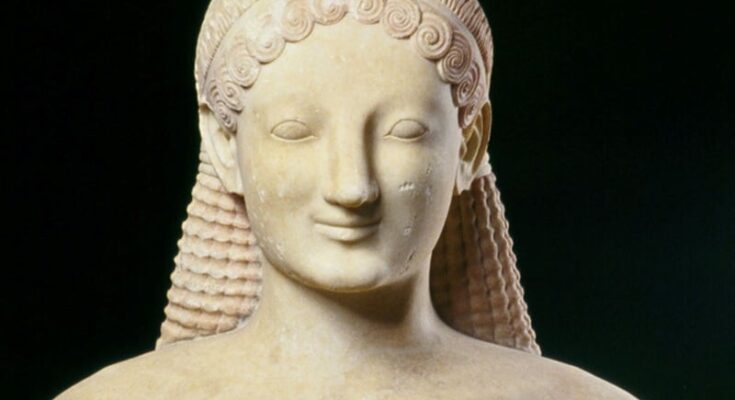
Nearly 280 Greek artifacts will be exhibited at the National Museum of China starting November 5, offering Chinese visitors a glimpse into the beauty of ancient Greece.
The exhibition, titled The Countless Aspects of Beauty in Ancient Art, is a collaborative effort between the National Museum of China and the Hellenic National Archaeological Museum of Greece that has received high attention from the Hellenic Republic Ministry of Culture and Sport.
It aims to explore the persistent pursuit and diverse creation of the theme of “beauty” in ancient Greece, from the Neolithic period to the end of the Hellenistic period, spanning nearly 5,000 years of history, the release noted.
The exhibition will showcase the unique position of “beauty” in the spiritual world of ancient Greece and how the ancient Greeks achieved self-transcendence through their exploration of beauty.
Marble statue of kouros a highlight of exhibition in China
One significant piece in the exhibition is a marble statue of a kouros (Apollo or youth) from the 5th century BC.
Kouros is the most significant statuary type in Archaic art (7th-6th century BC) and embodies the aristocratic ideals of the era. He either depicts deities or mortal young men at the peak of their beauty and vigor.
The expression on his face is characterized by an enigmatic smile. With his heroic nudity, he epitomizes perpetual youthfulness, eternal beauty, the power, hope and bliss of life.
All exhibits come from the National Archaeological Museum, with the vast majority being exhibited outside the country for the first time.
Exhibition unfolds the aesthetics of ancient Greece
Zhu Xiaoyun, the Chinese curator and director of the Department of International Relations at the National Museum of China, told the Global Times that the exhibition is themed on “beauty” and unfolds the vivid aesthetics of ancient Greece from three perspectives: “daily life,” “adornment,” and “human body.”
Zhu said the exhibition challenges the stereotype that “ancient Greece is equivalent to the Classical period of Greece.” The exhibits span nearly 5,000 years, and it is worth mentioning that a statue modeled after a Hellenistic version of the Cnidian Aphrodite of Praxiteles dated around 300 BC, after long-term cleaning and conservation efforts, will be presented to the public outside Greece for the first time.
The design of the exhibition provides a multi-sensory experience for visitors through music, multimedia, and fragrance experiences, conveying that “beauty” is a comprehensive concept.
The exhibition concludes with a small ancient Greek theater space, serving as an immersive experience area, a platform for youth education, and a venue for academic discussions around “beauty,” and hinting at the connection between ancient Greek philosophy and beauty through drama.
The exhibition is set to last until June 5, 2025.



